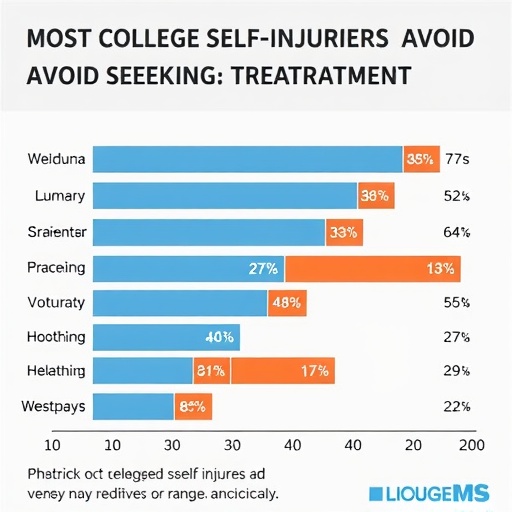In a landmark study poised to reshape neonatal intensive care, researchers have meticulously quantified the exposure of opioid and sedative medications in extremely preterm infants undergoing mechanical ventilation. The comprehensive analysis, published in the Journal of Perinatology, highlights an urgent need for precision in managing pharmacological sedation in this vulnerable population, where developmental fragility intersects with critical respiratory support.
Extremely preterm infants—typically those born before 28 weeks of gestation—face immense physiological challenges due to their immature organ systems. Mechanical ventilation, while often lifesaving, presents both therapeutic benefits and risks, necessitating the use of opioid and sedative agents to facilitate tolerance and mitigate discomfort. However, the dosing patterns, cumulative exposure, and potential repercussions of these medications have been inadequately characterized until now.
The study meticulously gathered data from a cohort of mechanically ventilated infants, employing longitudinal monitoring across hospital stays to map medication administration with rigorous temporal precision. Opioid and sedative use was quantified not merely by incidence but by exact dosages, timing, and duration, providing an unprecedented, granular perspective on pharmacotherapy practices in neonatal intensive care units (NICUs).
One striking revelation from the analysis is the pronounced variability in medication exposure among infants. Despite the shared condition of respiratory failure necessitating ventilation, the intensity and duration of opioid and sedative administration varied widely, underscoring a lack of standardized protocols and highlighting the subjective nature of sedation management in NICUs worldwide.
Furthermore, the cumulative doses of opioids and sedatives were substantial, with many infants receiving prolonged courses far exceeding minimal sedation needs. This finding raises questions about the long-term neurodevelopmental implications, given emerging evidence that prolonged opioid and sedative exposure during critical brain maturation periods can alter neural connectivity and cognitive trajectories.
Intriguingly, the data suggest a correlation between prolonged mechanical ventilation and escalated drug exposure, though causality remains complex. Mechanical ventilation duration likely acts both as an indicator of illness severity and a driver of extended sedation—each element intertwining in clinical decision-making and impacting infant outcomes.
The pharmacodynamics and pharmacokinetics of opioids and sedatives in preterm neonates are markedly different from older children and adults, influenced by immature hepatic and renal function as well as altered blood-brain barrier permeability. This disparity complicates attempts to extrapolate adult dosing paradigms to neonates, reinforcing the need for neonatal-specific research as exemplified by this study.
Several sedative agents, including morphine and midazolam, were frequently administered, often in combination, to achieve a balance between adequate sedation and avoidance of respiratory depression. The data illuminate nuanced shifts in medication preferences and dosages over time, reflecting evolving clinician comfort levels and emerging safety considerations.
The implications extend beyond immediate pharmacological concerns. Sedative and opioid exposure has been implicated in prolonged ventilation, delayed feeding, and altered pain responses—factors which themselves contribute to extended hospital stays and resource utilization. The study underscores the intertwined nature of sedation strategies and broader clinical outcomes.
Notably, the authors advocate for the development of evidence-based sedation protocols tailored to extremely preterm infants, emphasizing minimization of drug exposure balanced against effective pain and distress control. Such protocols could reduce variability and promote safer, more predictable neonatal care, ultimately sparing infants from potential drug-related harms.
This study also paves the way for future research into biomarkers and real-time monitoring technologies that might optimize sedation titration. By aligning physiological signals and behavioral cues with medication adjustments, NICU teams could refine care with precision medicine approaches, improving both immediate comfort and long-term neurodevelopmental trajectories.
The murky balance of protecting developing brains while relieving the distress of ventilation continues to challenge neonatologists. This new quantification of opioid and sedative exposure crystallizes one facet of this challenge and sets a foundation for advancing neonatal pharmacology, a field urgently in need of nuanced data and targeted intervention strategies.
In an era where neonatal survival rates for extreme prematurity have improved markedly, attention is increasingly focused on quality of survival—minimizing iatrogenic harm and supporting optimal neurocognitive development. The study’s insights into opioid and sedative use are thus timely, encouraging a paradigm shift towards gentler, more informed sedation practices.
While the study was observational, its rigorous methodology, detailed exposure metrics, and robust sample size confer considerable weight to its findings. These data provide a clarion call to clinicians, researchers, and policymakers to re-examine sedation norms and prioritize the delicate needs of extremely preterm infants.
As the neonatal community digest these findings, the hope is to catalyze a collaborative approach bridging pharmacology, developmental neuroscience, and clinical care to enhance outcomes for the tiniest patients facing the daunting intersection of prematurity and intensive care.
This research underscores the imperative for innovation in both measuring and moderating pharmacologic interventions during mechanical ventilation, moving beyond blunt dosage metrics towards individualized, developmentally attuned care strategies for the most fragile infants.
By quantifying opioid and sedative exposures with unprecedented clarity, the study unearths both the complexity and the opportunity inherent in neonatal sedation. It invites a future where technological advances and clinical wisdom coalesce to transform the neonatal intensive care landscape for the better.
Ultimately, this investigation enriches the scientific dialogue surrounding neonatal sedation, compassionately reminding us that every milligram administered to these infants carries profound implications, shaping not only survival but the quality of a life newly begun.
Subject of Research: Opioid and sedative medication exposures in extremely preterm infants receiving mechanical ventilation.
Article Title: Opioid and sedative use in extremely preterm infants receiving mechanical ventilation.
Article References:
Henderson, Z., Fuller, G., Benjamin, D.K. et al. Opioid and sedative use in extremely preterm infants receiving mechanical ventilation. J Perinatol (2025). https://doi.org/10.1038/s41372-025-02514-8
Image Credits: AI Generated
DOI: 26 November 2025
Tags: developmental risks of opioids and sedativesimpact of opioids on infant developmentJournal of Perinatology research findingslongitudinal study of medication exposuremechanical ventilation for extremely preterm infantsmedication dosing in critically ill infantsneonatal intensive care unit practicesopioid use in preterm infantspharmacological sedation in NICUsrespiratory support for premature babiessedative administration in neonatal carevariability in neonatal medication exposure





